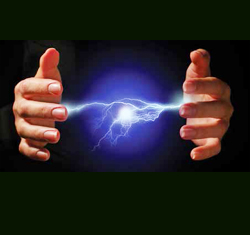Years ago, only car stereo makers would advertise “2,000 Watts Of Earthshaking Power!” But with the recent shift to switching power supply amplifier topology, we’re now seeing this with many pro-oriented products.
What’s behind the hype? And what about properly matching power amplifiers and loudspeakers? Answers start by focusing on the fundamental unit of measure in audio, the watt.
What is a watt? A strict definition according to Wikipedia: One watt is the rate at which work is done when an object’s velocity is held constant at one meter per second against constant opposing force of one Newton.
In electrical terms, one watt is the rate at which work is done when one ampere (A) of current flows through an electrical potential difference of one volt (V). It’s symbol is W.

The watt is named after James Watt, the prolific Scottish inventor and mechanical engineer. He is noted for improving Thomas Newcomen’s extremely inefficient atmospheric steam engine so much that Watt’s version literally powered the industrial revolution.
In audio, the watt is the unit of power we use to rate amplifiers and loudspeakers. However, what some may not realize is that power, in watts, cannot be measured directly. It is a derived quantity that can only be calculated by the measurement of voltage or current in a circuit with a known resistance.
We do this calculation through the use of Ohm’s Law. The most used version for audio is:
To complicate things further, loudspeakers do not present a purely resistive load to amplifiers. They present impedance to current flow (Z in place of R in Ohm’s Law) that is a mixture of resistance, capacitance, and inductance, which varies with frequency.
This is observed as the impedance curve in a loudspeaker’s specifications, and it also varies with the temperature of the voice coil as well. The higher the voice coil temperature, the higher the impedance will be. This phenomenon is also the cause of power compression.
Program Level & Headroom
During my time with Electro-Voice, Gary Ewald, a loudspeaker design engineer at the company, spent several months constructing a room where the power handling capacity of loudspeakers could be calculated accurately.
This was not a trivial undertaking. It required thermal probes to connected to the voice coil area, among other particulars, in a very controlled environment. As far as typical audio practitioners are concerned, we never really know how much power an amplifier is supplying to a loudspeaker when playing anything other than a sine wave signal. At best we can only guess.
For example, imagine playing a music source directly into a 100-watt amplifier driving a loudspeaker, and the amplifier’s input attenuator is set so the signal level is just below clipping. How many watts of power are being delivered to the loudspeaker? 100 watts? 50 watts? In fact, somewhere between only 1 and 4 watts are actually being delivered to the loudspeaker under these conditions.





















